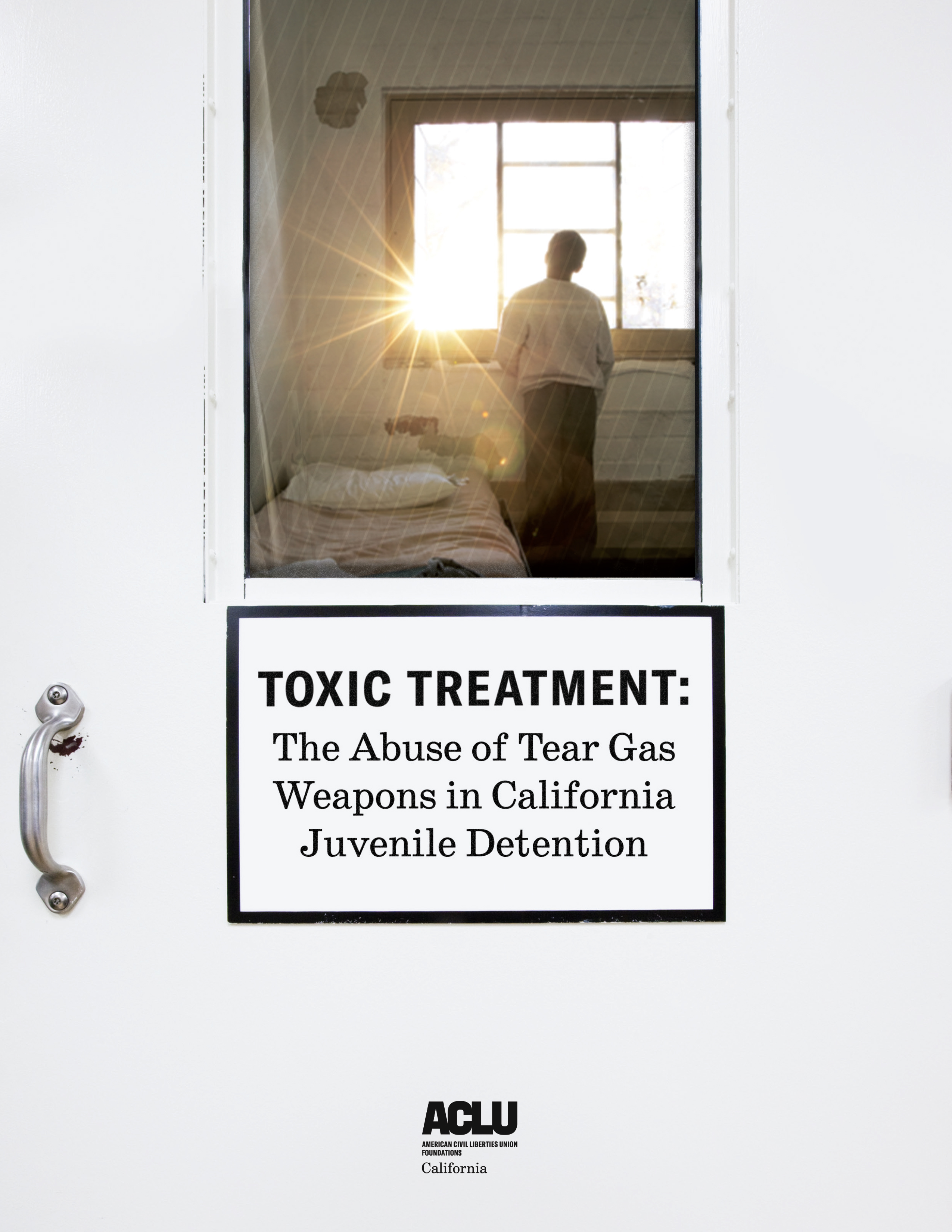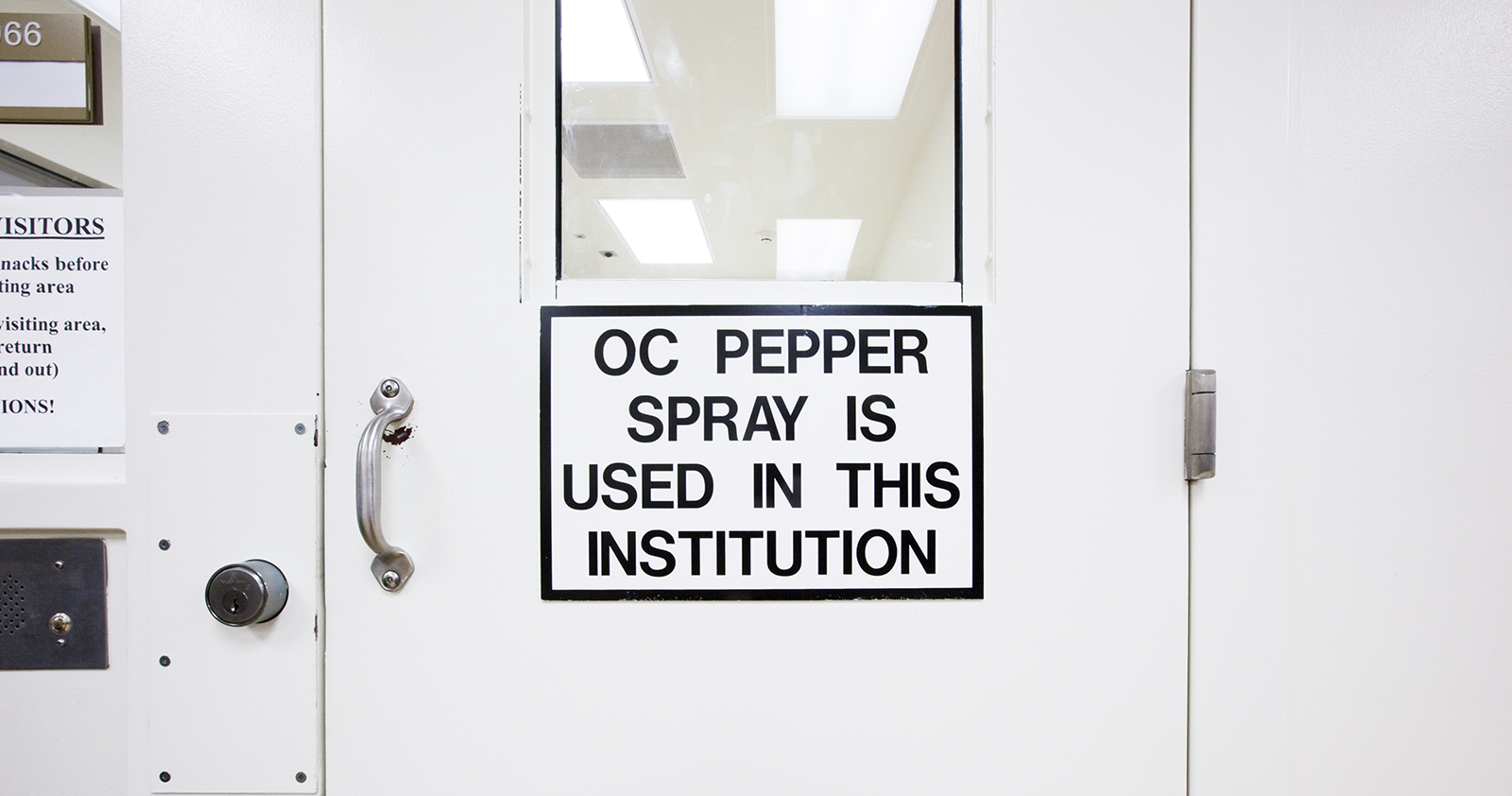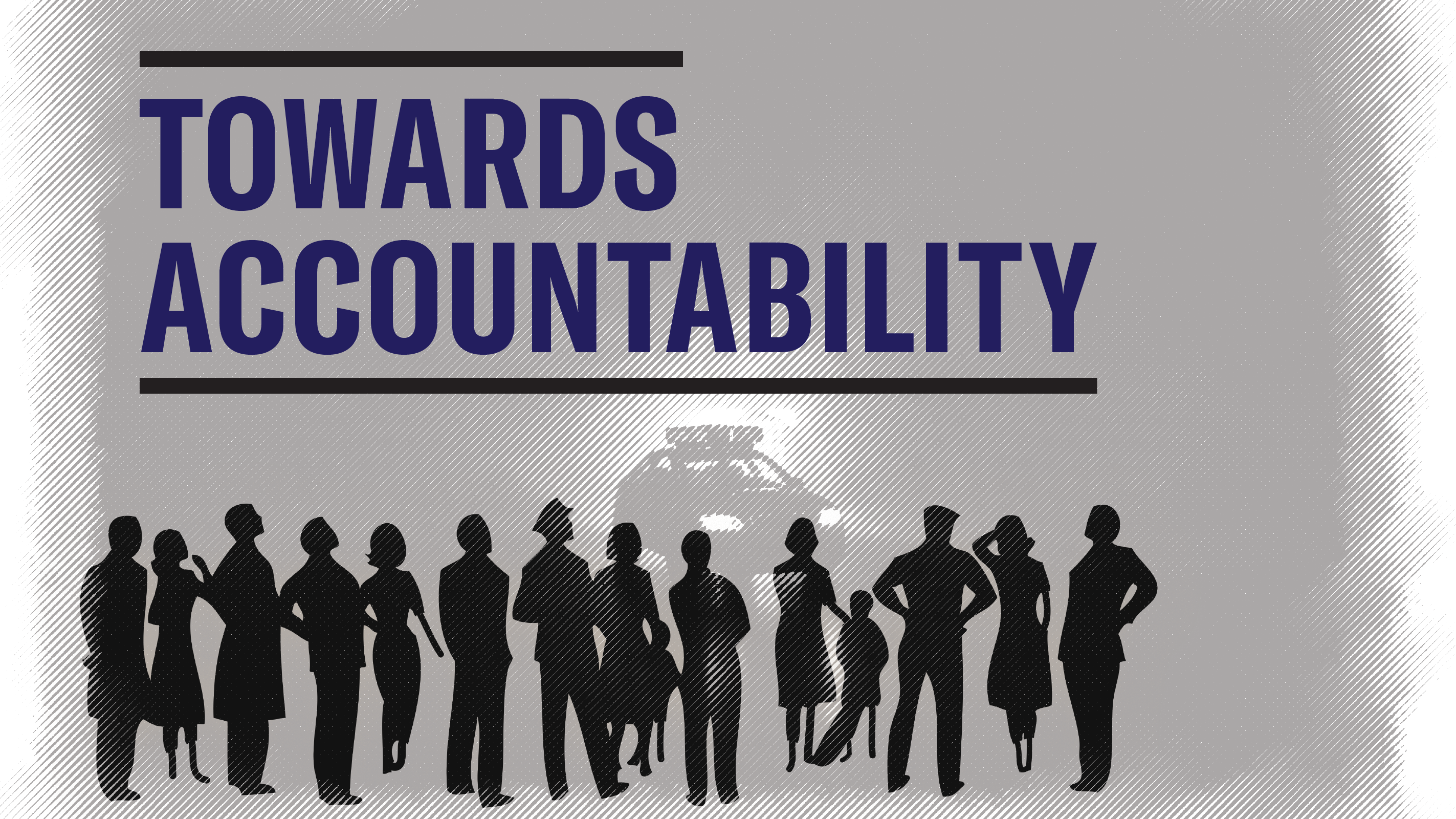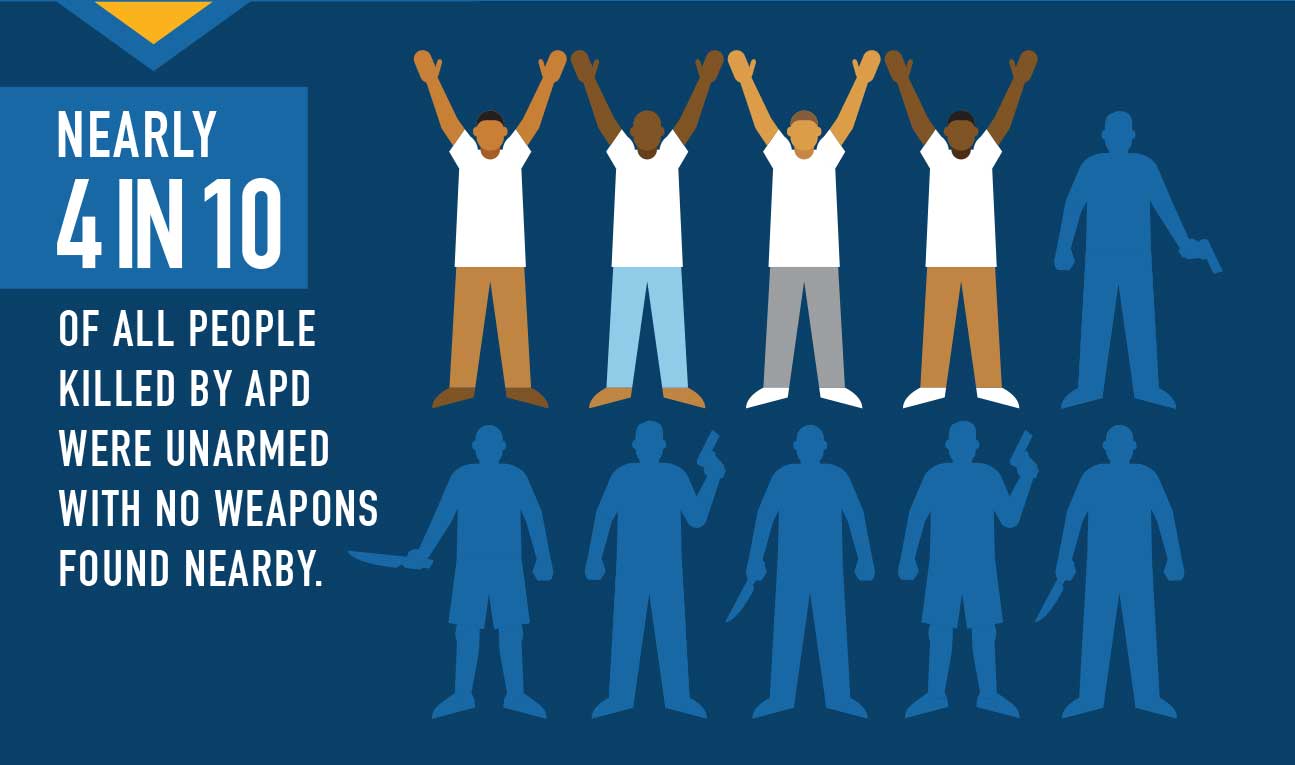Pepper spray, formally known as aerosolized oleoresin capsicum or "OC spray," is so toxic and dangerous that it is classified and regulated under state law as a form of tear gas. It can cause not only intense pain, but also blistering of the skin, respiratory arrest, and even an increased risk of strokes and heart attacks; its psychological and emotional impacts are uncertain.
And yet, it is alarmingly overused in California's juvenile detention facilities against youth as young as 12 and those in psychiatric crises.
This ACLU Foundations of California report, the result of reviewing 10,465 documents, is the first to detail the use of these toxic chemical agents in state and county juvenile detention facilities. It finds that state and county officials used toxic chemical agents more than 5,000 times between January 2015 and March 2018 against children and youth in juvenile facilities in 25 counties and in state facilities overseen by the Division of Juvenile Justice.
The number of incidents for that time period for the state would likely be much higher, but 18 additional counties that allow pepper spray to be used in juvenile detention facilities failed to provide data on how often it was utilized.
Banning the use of the spray in juvenile facilities is not a new idea — 35 states and seven of California's counties have already done it.
The Los Angeles County Probation Department — which oversees one of the largest juvenile justice agencies in the world — is likely to join them soon. It has released a plan to implement a Los Angeles County Board of Supervisors’ directive to ban the spray in its juvenile facilities by the end of the year.
It's time for the rest of California to follow suit. The report recommends:
- A legislative, complete ban on the use of all chemical agents — including but not limited to tear gas weapons such as OC spray — against youths in the juvenile justice system in California.
- If a statewide ban is not implemented immediately, counties and state agencies that continue to allow this form of use-of-force in juvenile facilities should be required to make information involving the chemical agents publicly available on their websites.
The ACLU of California furthermore calls for robust transparency on all uses of force in juvenile detention facilities.
Read the full report.
» See the documents we obtained in response to our California Public Records Act requests.
» See the letters we've sent to 22 counties regarding their failures to comply with our PRA requests.
Date
Wednesday, May 22, 2019 - 9:30am
Featured image
Show featured image
Hide banner image
Related issues
Criminal Justice and Drug Policy Reform
Documents
Show related content
Pinned related content
Chemical Agents in California's Juvenile Justice System - CPRA documents
Tweet Text
A report on the use of toxic chemical agents against youth as young as 12 in juvenile detention
Share Image
Type
Menu parent dynamic listing
Show PDF in viewer on page
Style
Standard with sidebar
How does a city effectively discipline its police?
Los Angeles, home to one of the largest police forces in the nation, has struggled with this question for decades, and has yet to settle on an answer that regularly ensures that officers who commit serious misconduct receive serious discipline.
The Los Angeles Police Department gained notoriety for scandals that, at their core, were caused by its failure to properly discipline officers and take allegations of misconduct seriously. Perhaps its most significant scandal was the beating of Rodney King by three LAPD officers on March 3, 1991.
Before the infamous amateur video of the police beating of Rodney King surfaced, two separate witnesses contacted the LAPD and attempted to report the incident and file a complaint. The Department rebuffed both of their efforts. When news stations broadcast the video to the public, even then-president George Bush described the officers' conduct as "sickening."
The public outcry over the officers' conduct led then-L.A. Mayor Tom Bradley to create the Independent Commission (aka the "Christopher Commission") to investigate excessive force within the LAPD. The Christopher Commission identified a number of causes for the pervasive use of excessive force within the Department, but the linchpin of this unchecked violence was its ineffective disciplinary process. And central to that disciplinary process was the Board of Rights — the disciplinary appeals board for the LAPD that has the ultimate say in officer discipline.
The disciplinary process for LAPD officers is long and complex, but for the most serious misconduct, the process ends with the Board of Rights. Any discipline starts with a complaint filed against an officer — either by the public or another LAPD employee — for violating LAPD policy. Internal affairs and the officer's supervisor investigate complaints. If the officer used deadly force, the Inspector General's Office and the LAPD Police Commission will also weigh in on whether it believes the officer's conduct violated Department police. If anyone during the review process determines that the facts don't support the allegation, or that the conduct only deserves a very minor penalty, the process stops. But when the internal process determines that the officer did violate policy and that he or she deserves a significant penalty, the case is referred up to the chief of police.
If the chief reviews the investigative file and agrees that the officer is not only guilty but deserves a lengthy suspension, demotion, or to be fired, the officer gets to challenge this penalty with the Board of Rights — a three-person panel that currently includes 2 officers and 1 civilian. The Board of Rights is not bound to the Department's factual findings or disciplinary recommendations. Instead, the three members independently determine whether an LAPD officer should receive the chief's recommended punishment, or any punishment at all. The Board of Rights therefore has tremendous power in determining whether LAPD officers ultimately are held accountable for wrongdoing.
This report re-examines the analyses presented in prior reports and draws connections across the data spanning almost thirty years. This report also supplements previous analyses by providing context available from public discourse around the Board of Rights — including City Council actions — and with publicly-available disciplinary data. It concludes by highlighting recommendations that have gone unheeded, and, with input from community partners, supplements with additional recommendations directly in response to these identified needs.
In March 2017, Los Angeles voters approved Charter Amendment C, which mandated that the City Council adopt an ordinance changing the existing Board of Rights system to give officers the option of an all-civilian review. The City Council also created an Ad Hoc Committee on Policing, purportedly tasked with providing a public process for investigating the failings of the current system and improving LAPD discipline. While the City Council is free at any time to make changes to the Board of Rights or other elements of the LAPD disciplinary system, it is explicitly tasked with doing so right now.
This report and the series of recommendations it proposes, should inform the City Council's next steps towards meaningfully improving LAPD discipline.
As one of the post-Rampart reports, commissioned by the LAPD officers' union and authored by Prof. Erwin Chemerinsky recognized, "[t]here never will be public confidence in the Police Department until there are major reforms in the disciplinary system. Officer confidence in the system is equally important. There thus must be major reforms of every aspect of the disciplinary system to provide a fair and just system of receiving, investigating, and adjudicating complaints against officers." If the LAPD disciplinary system remains dependent on the Board of Rights to impose serious discipline, finally adopting these needed changes is a crucial part of this reformation process.
Date
Thursday, November 29, 2018 - 9:45am
Featured image
Show featured image
Hide banner image
Related issues
Police Practices
Documents
Show related content
Pinned related content
Civil Rights Groups Demand Reforms to LAPD Disciplinary Process
Tweet Text
Just released: @ACLU_SoCal, @BLMLA, @CoCoSouthLA report, "[node:title]"
Type
Menu parent dynamic listing
Show PDF in viewer on page
Style
Standard with sidebar
From 2003-2016, Anaheim Police Department killed 33 people during the process of arrest. Since 2014, the rate of arrest-related deaths caused by Anaheim PD exceeds that of Los Angeles Police Department, New York Police Department, and San Francisco Police Department, and is 74 percent higher than average for police in California.
December 2017: We’ve updated our report to respond to questions by more thoroughly explaining our methodology and its application to some controversial incidents, and to correct two incidents where we attributed shootings to an officer who was present but did not fire.
Read the updated report
Our findings point to the following problems in the Anaheim PD:
• Anaheim PD homicides make up a substantial percentage of all homicides in the city. Between 2003 and 2016, Anaheim PD was responsible for 17 percent of all homicides in the city. In 2009 and 2016, 36 percent of all homicides were at the hands of Anaheim officers.
• Black and Latino Anaheim residents are more likely to be killed by Anaheim PD. Black people make up 3 percent of Anaheim’s population but make up 12 percent of people killed. Latinos make up a little over half of Anaheim’s population, but make up 61 percent of those killed. White people make up 28 percent of the population and 24% of those killed.
• Nearly 40 percent of people killed by Anaheim PD were unarmed. People of color are more likely to be killed while unarmed. 55 percent of Latinos killed by Anaheim PD were unarmed. 25 percent of Black people were killed while unarmed. 12.5 percent of white people killed by Anaheim PD were unarmed.
• 55 percent of Anaheim’s arrest-related deaths involved “repeat offenders” — officers who were also involved in one other death. 18 percent of Anaheim PD’s deaths involved two APD officers, Nick Bennallack and Kevin Flanagan.
To address fatal-use-of force, Anaheim must take action in three areas:
1. Replace the piloted Public Safety Board (PSB). In order for the PSB to provide effective oversight, they must be empowered with broad authority to investigate specific incidents and to examine broader concerns with Anaheim PD policies and practices. The board must be independent and have adequate resources and funding. The board must have legally enforceable, unrestricted access to department records and internal investigations.
2. Reform use-of-force policy. APD must bring the use-of-force policy in line with national best practices and governing law. This includes authorizing only minimal and necessary force, outlining clearer standards to better define imminent threat, limit deadly force, require de-escalation, require intervention when officers use excessive force, require medical assistance to be provided, revise a foot pursuit policy, include any force that may cause death into deadly force policy.
3. Management that promotes consistency and transparency. Anaheim PD must implement an early warning system to track officer use of force and identify repeat shooters. The Department must change officer evaluations to reward officers on community policing practices and ability to avoid force. Anaheim PD must provide public reporting on complaints it received, how it has adjudicated complaints and force investigations, and the discipline it imposes. Anaheim PD must also implement a stronger body camera policy by stipulating that footage must be released promptly, presumptively within 30 days. Anaheim PD should conduct an initial interview of officers before they are permitted to view body camera footage and should ensure body cameras are not used for surveillance of the public.
Read the full report
Date
Thursday, November 16, 2017 - 12:15pm
Featured image
Show featured image
Hide banner image
Related issues
Police Practices
Documents
Show related content
Pinned related content
ACLU Releases Report on Excessive Force Used by Kern County and Bakersfield Law Enforcement Agencies
Tweet Text
[node:title]
Share Image
Type
Menu parent dynamic listing
Show PDF in viewer on page
Style
Standard with sidebar
Pages



